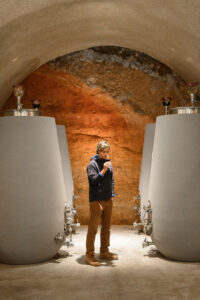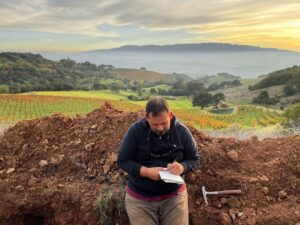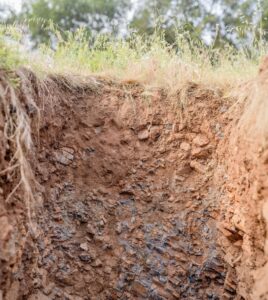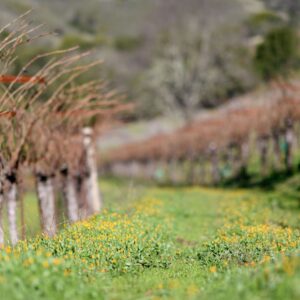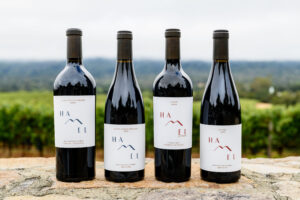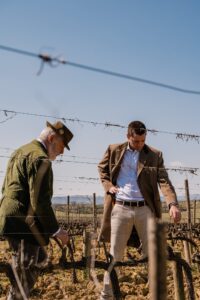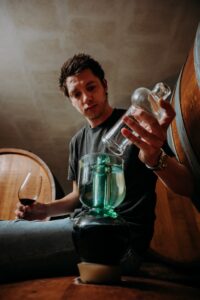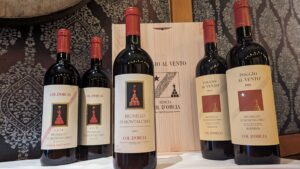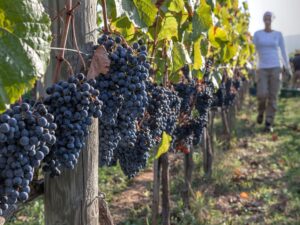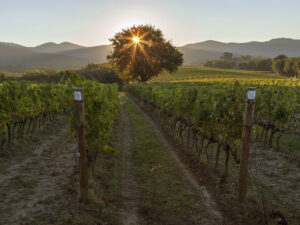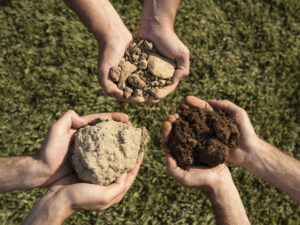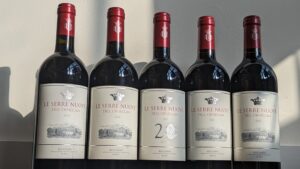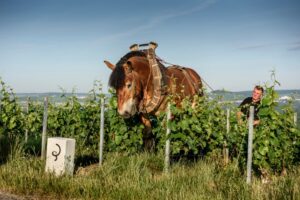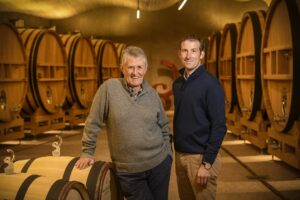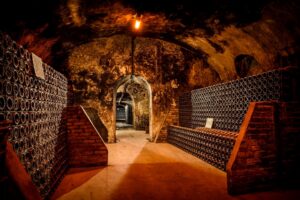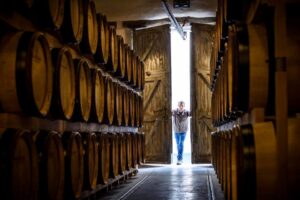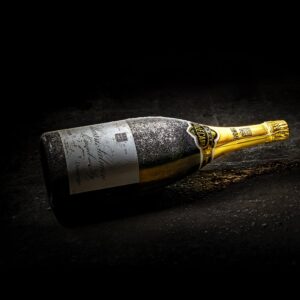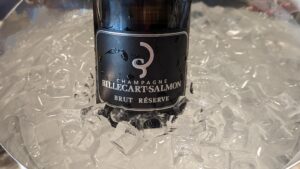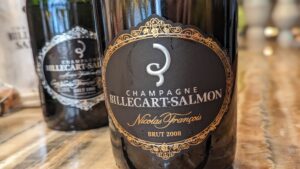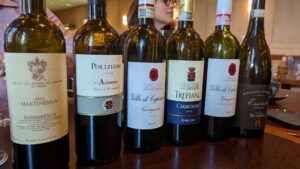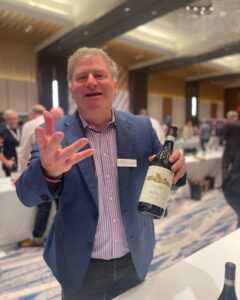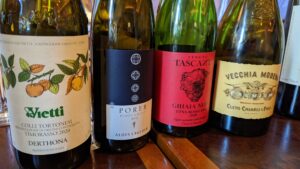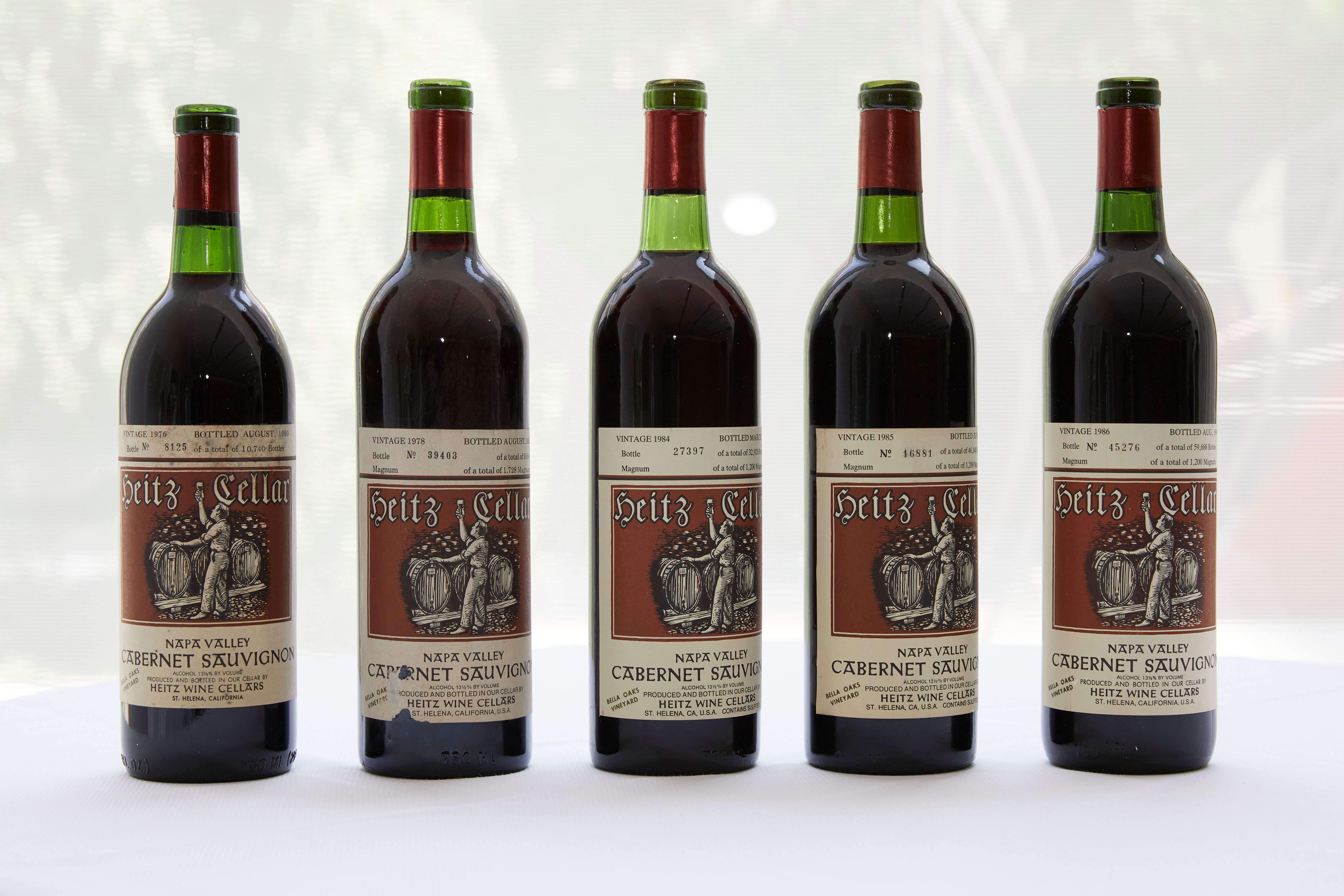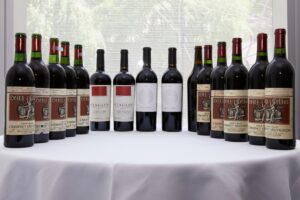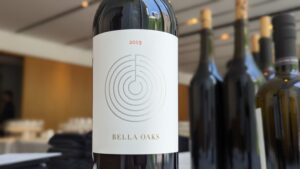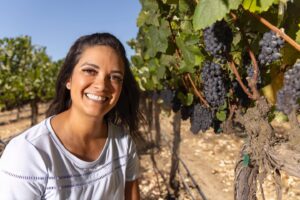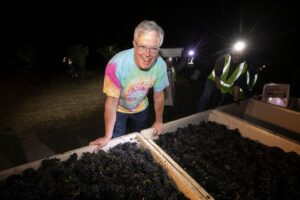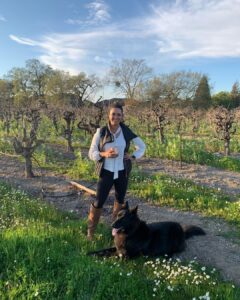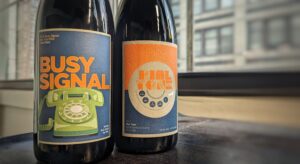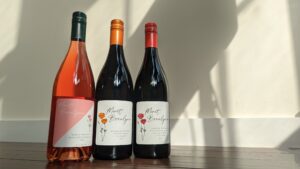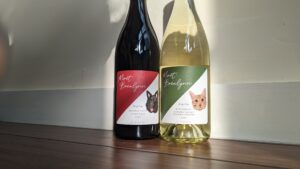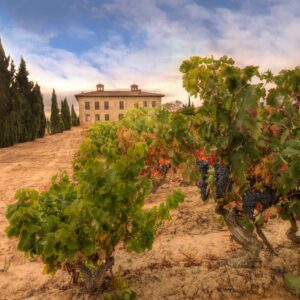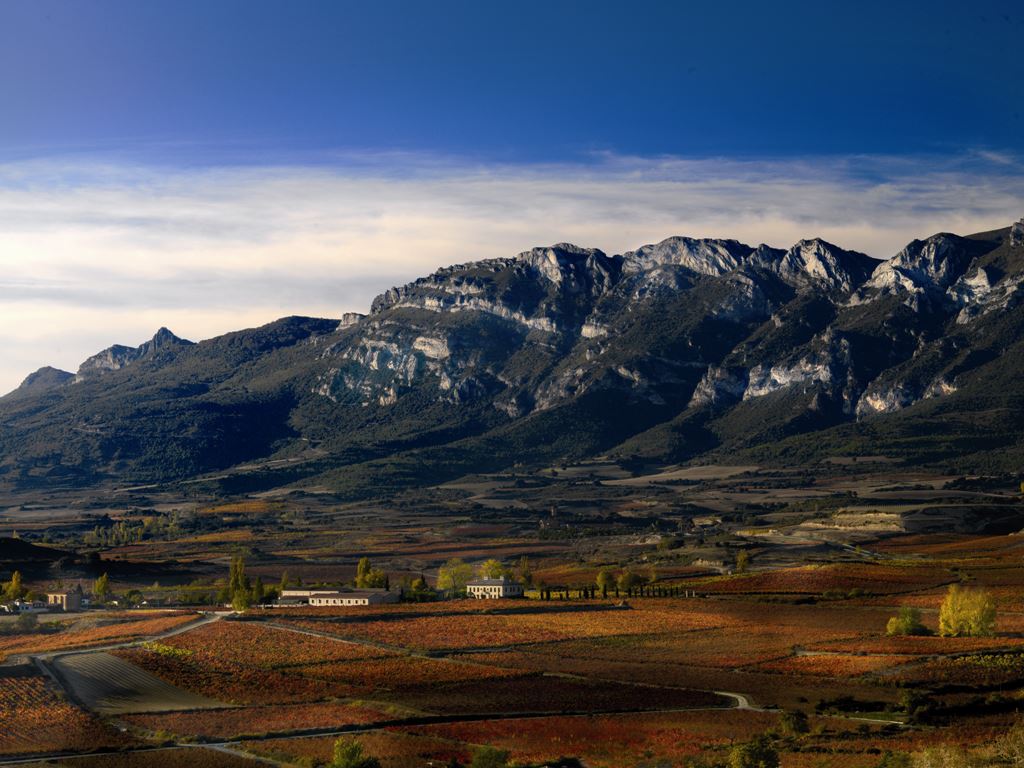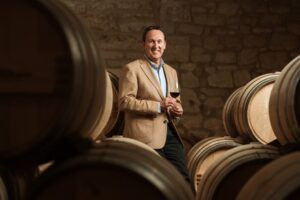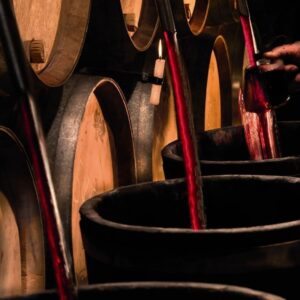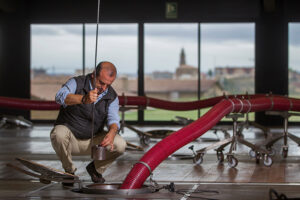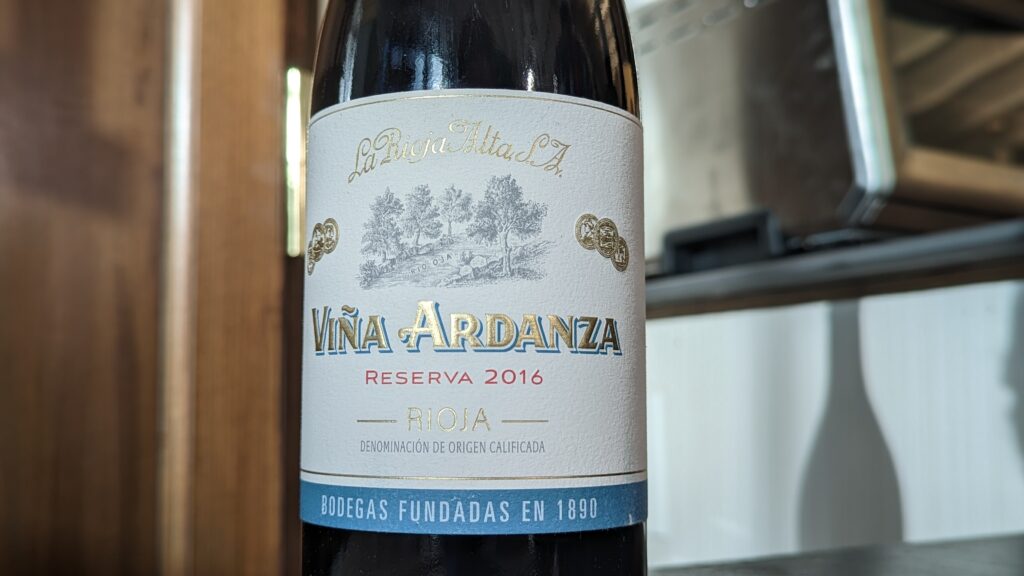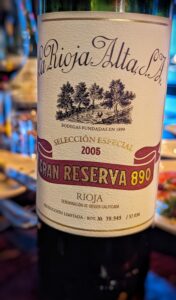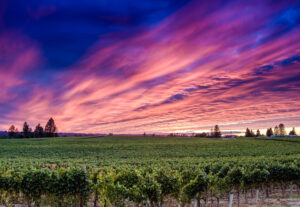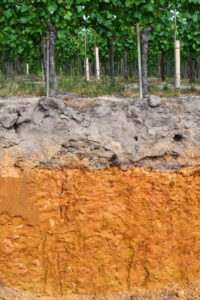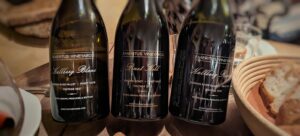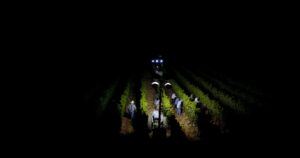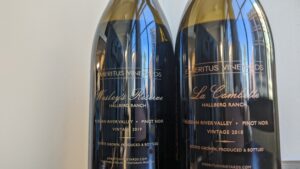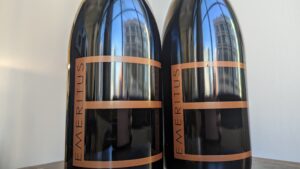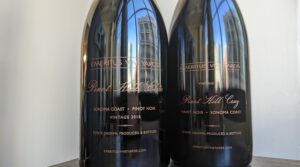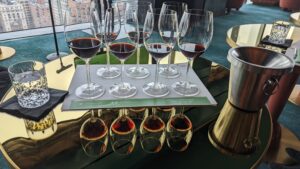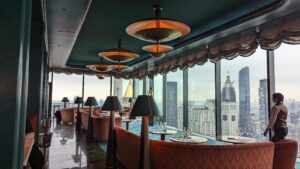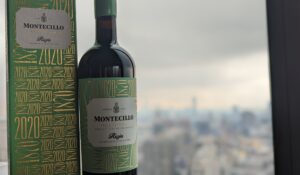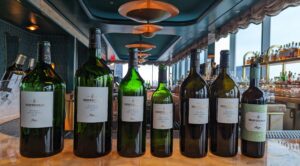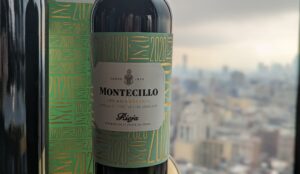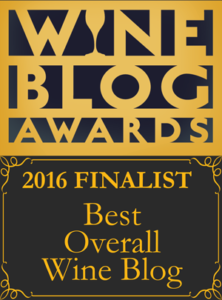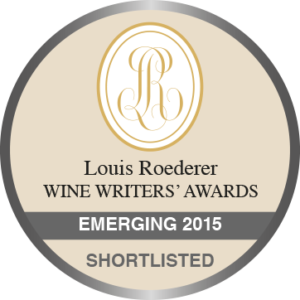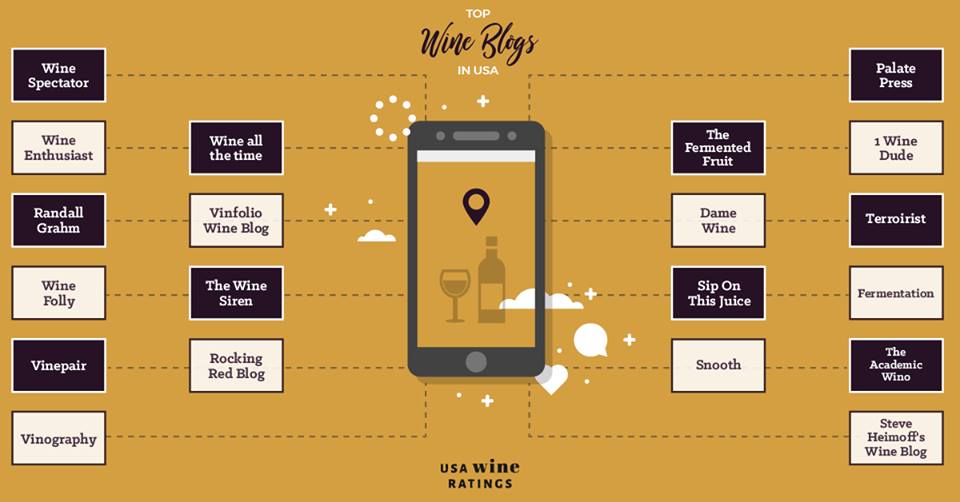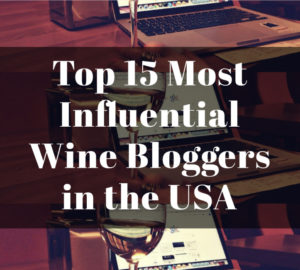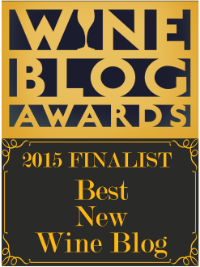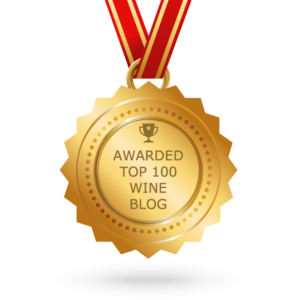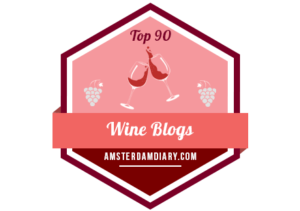“You will make worse wines!”
That was the response from many well-respected people in the wine world in California when winemaker and director of winegrowing at Hamel Family Wines, John Hamel, asked well-respected colleagues if it was possible to dry farm (avoiding irrigation) in Sonoma County, California. The response from most was a warning that he would make worse wines because the grape bunches on the vines would dehydrate. John was already very thoughtful and conscious with his irrigation, only watering the vineyards when they needed it. After surveying more seasoned professionals, the consensus was that he was doing everything right regarding making high-quality wine. And yes, he was happy with the results from his vineyards. Still, he couldn’t help but think that a more superb quality could be achieved if he had a better understanding of how to manage his particular plots of land. He was determined to seek out someone making excellent quality wines while dry farming in his area, which often saw zero rain during the summer growing season.
He reached out to a prestigious winery in Napa Valley called Dominus and the technical director was more than happy to share information about their great success with dry farming. It would be a tremendous amount of work for John as one needs to be very “present” and on top of what is going on in the vineyards at all times to attempt any amount of dry farming.
Dry farming would make John’s life a lot more challenging but he was fiercely determined to do everything in his power to give his vineyards the chance to express themselves fully.
Beginning of Hamel Family Wines
In 2006, while John was attending university, his parents bought a property in Sonoma with a small vineyard to escape the summers in their primary home in San Francisco. They started to make a little bit of wine as a small passion project while their son pursued his passion within the slow, organic food scene while attending college. He then worked on organic farms that would eventually take him to a small operation on Mount Veeder in Napa, home to some pretty impressive Cabernet Sauvignon vineyards. Even though he loved the work, he needed to find a job that actually paid, as many of the tiny organic farms only paid in room and board. Hence, he ended up working for a public relations (PR) company in San Francisco that focused on wine with many clients that were cult Napa projects.
He learned a lot from the PR firm but he yearned to return to the land in some capacity. At some point, his father decided that he wanted to build a family legacy that he could pass down by making ultra-premium wines, so he purchased more vineyards in the western base of the Mayacamas Mountains in Sonoma and hired a winemaking consultant and a vineyard management company. John went on to earn his winemaking certificate from UC Davis and became the first full-time employee of Hamel Family Wines. After many years of throwing himself into the study of all things winemaking and winegrowing, he ended up officially taking over the winemaking and management of the vineyards in 2017. Yet his approach has not been to find the easiest ways to make high-quality wine but to leave no stone unturned in his mission to strive for perfection, knowing he will never achieve it in his lifetime.
A Passion for the Land
When John threw himself into an in-depth study of understanding his vineyards, the French idea of the word terroir in the wine (expression of place) frustrated him. They brought in experts to study the soils and were given an analysis of the makeup of the various layers underneath the earth but no one could explain to him what that meant to the wine. One day, back in 2014, he was listening to a podcast of an interview with Pedro Parra, a well-known Chilean expert on the idea of terroir – he received a PhD in terroir from the Paris Center of Agriculture. That was the moment that John heard someone speak with “clarity” about terroir for the first time and not only has Pedro spent a lot of time consulting in France and worldwide but he has also consulted for some top wine producers in Sonoma. So John thought he had nothing to lose and cold-called him out of the blue. Pedro was intrigued so he went out to check out the vineyards, which he said were mainly defined by volcanic soils, specifically basalt, and sat down to talk to John about his intentions. “I think he goes into projects, and he’ll leave his advice, and some of it gets followed and other parts don’t,” noted John in regards to first meeting Pedro and John continued by saying, “I think he saw in me someone who is growing and who wants to understand things in a deeper way. So he made a bet on me to a certain extent.”
As Pedro conducted various tests in the vineyards, he was able to draw up maps that broke up each vineyard into various tiny plots according to multiple factors. In the end, it has dramatically informed John of each section’s different qualities so the management and timing of harvest can significantly vary from plots right next to each other.
This more profound understanding of his vineyards has allowed John to properly manage the nuances of each section and that has assisted him with his success with dry farming. In 2017, he started to dry farm 20% of their vineyards; by 2018, up to 75% of the vineyards were dry farmed. Today, depending on the vintage, they hover around 70% to upper 70%. One of the reasons he has been so successful is that he has pushed the vines to grow roots that went extremely deep by limiting water, as vines with superficial roots will collapse without irrigation in an area such as Sonoma that has virtually zero rainfall most summers.
“People always talk about older vines making better wines because older vines have a very developed, very prolific root system,” John explained. He further elaborated by noting that he tastes the greater depth in his wines that he feels is created by most of his vines having deeper roots.
A surprise benefit of dry farming has been the ability to pick much more balanced grapes. John said that it is a struggle in California, in general, to get both sugar maturation and phenolic maturation at ideal levels at the same time. Sugar ripeness is what is turned into alcohol as well as contributes to flavor development, as opposed to phenolic ripeness, which is the development of the skins and grape seeds that add to the overall structure of a red wine. If it is underdeveloped, wines can be too tannic and texturally harsh. But while one is trying to get those silky, round tannins in their Cabernet Sauvignon grapes in sunny California by leaving the grapes much longer on the vines, the sugar often increases too high and the acidity drops too low.
And so, it is a common practice to “water back” – adding water to pre-fermented juice, to lower too high potential alcohol levels or even the risk of a stuck fermentation, as well as acidifying with the addition of acid before primary fermentation or after. But since John started dry farming, those grapes are ready to be harvested earlier as the phenolic maturation happens quicker, so the sugar levels never get too high and the acidity never gets too low, allowing him to avoid watering back or adding acidity to his wines as they are already in balance. However, he has observed that a certain amount of water deficit in his vineyards has shifted the plant’s energy from vegetative growth (growing leaves in the canopy) to fruit maturity. And considering that he was still able to dry farm in the 2021 vintage, a historic low as they only received 12 inches of rain when 28 inches is typical, and the vineyards performed exceptionally well, so much so it is in the top two when it comes to the best vintages he has experienced in a decade, he is a lot more confident that dry farming is the best practice for his vineyards.
Biodynamics
John has been farming his vineyards biodynamically for several years and they became certified back in 2015. Still, he admitted that he thought they were going through the motions without “fully understanding” what each step meant and was afraid he wasn’t using them correctly. He reached out to a well-known woman in the biodynamic wine world, based in Bordeaux, named Corinne Comme. She explained why each step was essential and brought different techniques more adaptable for their vineyards. Through time, John realized that since biodynamic practices were established in northern Europe by Rudolf Steiner, there needed to be adjustments in regards to finding balance within a wine region in California instead of just following what a vineyard grower would do in Germany, as it is all about finding balance in nature.
Hence, certain biodynamic, natural sprays are more appropriate for his Sonoma vineyards and the timing of such treatments is also different. John is starting to investigate using native plants used by the indigenous people in California for possible future treatments of the vines, although he does realize that many of these native plants were used for homeopathic purposes for people and not so much used for managing crops – hence, nothing might come from it. But he is up for the challenge of understanding these plants better over the next ten years and it may become an added layer of their expression of terroir, aka sense of place.
Journey to Express Terroir
Back in 2015, John took a honeymoon with his wife to France and they ended up getting a much-coveted tour with Anselme Selosse, of Jacques Selosse grower Champagne house, a place that has a cult following among hardcore Champagne enthusiasts. John was very proud of all the energy he was placing into his vineyards, which he shared with Anselme, yet, once Anselme found out that he irrigated, he said, “You might as well have a bunch of potted plants in the field because that is as strong of a connection you will ever have to the terroir there.” At first, John laughed off the comment as it seemed impossible not to irrigate in California but the statement did bother him because he felt that Anselme wasn’t wrong. And hence, his journey into dry farming began.
There is no doubt that Hamel Family Wines already had everything that would create fine wines: wonderful vineyards with John’s parents, Pamela and George, investing so much in creating a lovely hospitably center and a state-of-the-art winemaking facility with various sizes of stainless steel tanks, barrels and concrete “eggs,” giving John every opportunity to find the ideal vessel to express each plot. And there is no shortage of incredible wineries in Napa and Sonoma that have all the bells and whistles that make it possible to produce high-quality wine. But many of them do not have someone like John Hamel, who in some respects is like one of those eccentric French vintners who goes to great lengths, striving until their last breaths, trying to achieve perfection when it comes to expressing terroir. Yet, he doesn’t blindly follow any philosophy, instead, he wants to understand how any theory works, and most importantly, see the results. And he is far from content with what he has already achieved, as it seems he is only getting started.
And who knows, in the future, he may find a new way to attempt biodynamic practices in California that is more applicable to such a climate but only the future can tell. But one thing is for sure: the Hamel Family Wines’ future is one to keep an eye on.
***Link to original Forbes article: https://www.forbes.com/sites/cathrinetodd/2023/10/11/wine-producer-in-top-california-wine-region-goes-against-advice-and-decides-to-dry-farm/
The Hamel Family Wines’ labels have recently been updated to reflect John and his team’s tremendous work in their vineyards “to produce wines that are truly expressive of place.”
2019 Hamel Family Wines’ Isthmus’ Sonoma Valley, California: 53% Cabernet Sauvignon, 28% Merlot, 18% Cabernet Franc and 1% Petit Verdot from Hamel Family Ranch vineyard and Nuns Canyon vineyard. Delicious with red plum and blueberry tart flavors intermixed with complex layers of broken rock and intense minerality that has an overall elegance in the tannic structure of the wine with juicy cassis on the palate and sandalwood aromas on the long, aromatic finish.
2019 Hamel Family Wines, Nuns Canyon Vineyard, Moon Mountain District, Sonoma County, California: 78% Cabernet Sauvignon and 22% Cabernet Franc with 100% from Nuns Canyon Vineyard. Dark, brooding fruit with black cherry compote laced with a saline minerality with multifaceted complex notes of tree bark, iron and hints of jasmine with finely etched tannins and an overall energetic quality to the wine that has a concentrated finish with lingering aromas of dried wildflowers.

